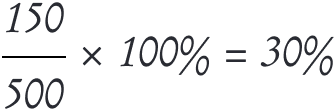Explore the crucial difference between CTOR vs CTR in email marketing. Learn when and why each metric matters for success and discover strategies to boost your CTOR.
February 29, 2024
CTOR vs CTR: Unveiling the Crucial Difference in Email Metrics
Question
Answer
Use CTR to assess your email campaign’s initial appeal and effectiveness, and use CTOR to the impact of your email content on an already interested audience.
When it comes to email marketing, achieving engagement, conversions, and, ultimately, customer loyalty depends heavily on analyzing the data generated by the campaigns we send out. Click-to-Open Rate (CTOR) and Click-Through Rate (CTR) are two critical metrics that we use to gauge success, offering insights into the effectiveness of marketing emails and how audiences engage with them. Though they may seem similar at a glance, understanding the differences between CTOR and CTR is essential for any marketer looking to optimize their email marketing.
What is a Click Through Rate (CTR)?
The click-through rate-in email marketing campaigns refers to the percentage of email recipients who click on one or more links contained within an email. This metric is used to gauge the effectiveness of an email campaign in engaging recipients and driving them to take a desired action, such as visiting a website or landing page. It is calculated by dividing the number of clicks by the number of delivered emails and multiplying by 100 to get a percentage.
Here is what the formula for calculating the CTR looks like:

For example, imagine you’ve sent an email campaign to your subscribers, and you’re now evaluating its performance. Here’s the data you have collected:
Total Emails Delivered: 1,000
Total Clicks (on links within the email): 220
Total Emails Delivered: 1,000
Total Clicks (on links within the email): 220
Using the formula above, here is how you would calculate the CTR for this campaign:

So in this case, the Click Through Rate (CTR) for the email campaign is 22%.
Based on data from Mailchimp, the average CTR across all industries is 2.66% — however, depending on the industry, this value can range anywhere from 1-5%.
Why is CTR Important?
Click Through Rate provides a broad indicator of your email campaign’s overall effectiveness from the moment it lands in recipients' inboxes. Unlike CTOR (which measures engagement among those who have opened an email) CTR assesses how compelling your email is across the entire recipient base, factoring in both the allure of your subject lines and the content’s ability to engage and drive clicks. High CTR values indicate not only successful delivery and open rates but also effective content that prompts immediate action, encompassing a comprehensive view of campaign performance.
The click through rate serves as an early indicator of potential engagement and conversion success, guiding marketers on the initial appeal of their emails. By analyzing CTR, you gain insights into the effectiveness of your subject lines, email design, and overall content strategy in motivating recipients to engage with your message. This broad perspective is essential for identifying which elements of your campaign are most effective at drawing recipients further into the engagement funnel, from opening an email to completing the target action.
What is a Click-to-open Rate (CTOR)?
The Click-to-Open Rate (CTOR) measures how many people clicked on a link in your email after opening it – it's like checking how many people found the inside of your email interesting enough to take action. You get this rate by dividing the number of clicks by the number of opens and then turning it into a percentage.
To illustrate this in action, imagine your campaign has yielded the following results:
Total Emails Opened (Unique Opens): 500
Total Clicks (Unique Clicks): 150
Total Emails Opened (Unique Opens): 500
Total Clicks (Unique Clicks): 150
To calculate the CTOR, you would use the following formula:

In this case, the CTOR rate would be calculated as follows:

In this example, the Click-to-Open Rate is 30%. This means that out of all the recipients who opened the email, 30% found the content engaging enough to click on.
As with the click rate, benchmarks for a good CTOR vary across different industries, ranging from 5.9% (for non-profit organizations) to 14% (for retail), to a whopping 38.1% (for computers and electronics) based on a report from SendGrid. The average CTOR across all industries is 11.1%.
Why is CTOR Important?
The CTOR directly measures the impact of your email’s design, message, and call-to-action (CTA) among those who’ve shown interest by opening the email. A high CTOR indicates that your email is not just enticing enough to open, but is also compelling enough to drive interaction. Unlike Click-Through Rate (CTR), which measures the overall engagement across all delivered emails, CTOR provides a nuanced insight into how engaging your email’s content truly is as it only factors in those who have seen it.
For digital marketers, CTOR serves as a critical gauge of content effectiveness. It provides actionable insights into which aspects of your email content — be it the copy, layout, images, or CTAs — capture the interest of your audience, encouraging clicks and further engagement. By analyzing CTOR, marketers can perform A/B tests to iterate on their email designs and content, maximizing engagement and, ultimately, conversion rates.
CTOR vs CTR: Which Should You Use?
Both the Click-to-Open Rate (CTOR) and Click Through Rate (CTR) can provide useful insights into campaign performance. However, understanding when to use each can significantly impact the effectiveness of your marketing strategies.
CTOR, with its focus on the percentage of recipients who click after opening an email, offers a deep dive into the content’s engagement levels. It’s particularly useful for evaluating the strength of your email’s body and calls-to-action among those who have shown interest by opening the email. If your goal is to assess and improve the quality of your email content or the persuasiveness of your CTAs, CTOR is your go-to metric. It tells you if your message resonates with your audience, giving you the insight needed to tweak your content for better engagement.
CTR, on the other hand, provides a broader overview by measuring the percentage of clicks against the total emails delivered. It shines a light on your email campaign’s overall appeal, from the subject line’s effectiveness in prompting opens to the content’s ability to engage and drive action. If your focus is on optimizing your email’s reach and initial engagement — or understanding how well your email performs in terms of drawing attention in the inbox — CTR is invaluable. It helps you gauge the immediate impact of your emails, guiding improvements in your subject lines and email design to enhance overall performance.
Choosing Between CTOR vs CTR
The decision on whether to focus on CTOR vs CTR hinges on your specific campaign objectives and where you’re looking to optimize.
Opt for CTOR When:
You’re evaluating the impact of your email content on an already interested audience. For example, if your emails are being opened but not generating clicks, a low CTOR suggests the need to revamp your content or CTA. A campaign introducing a new service with detailed information inside the email is a prime candidate for CTOR analysis. If opens are high but clicks are low, refining the message or CTA clarity could drive better engagement.
Lean towards CTR For:
Broad assessments of your email campaign’s initial appeal and effectiveness. For instance, if you notice a campaign aimed at driving early registrations for an event isn’t performing well, even though it’s been delivered to a wide audience, analyzing CTR can help identify gaps in your subject line or email design. This metric is crucial for tweaking those first impressions to improve overall engagement.
In practice, the most effective email marketing strategies consider both metrics. By analyzing CTOR, you can refine the content of your emails to ensure they resonate deeply with those who open them. Simultaneously, focusing on CTR allows you to enhance your emails' ability to cut through inbox clutter and prompt clicks. Together, these metrics provide a comprehensive view of your email campaign’s performance, from first impression to target action.
Final Thoughts
In closing, when comparing CTOR vs CTR it becomes evident that both these metrics are essential in email marketing. When leveraged in tandem, the click-to-open rate and click through rates allow marketers to gain a comprehensive view of their email campaign performance — from the first impression to final action. By understanding the differences between CTOR and CTR and applying both strategically, marketers can craft more effective marketing campaigns that not only reach their audience but also resonate with them, leading to improved engagement and conversion rates, and, ultimately, more revenue.


